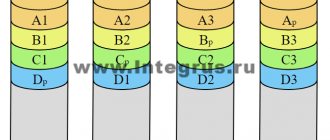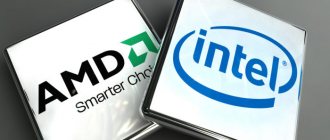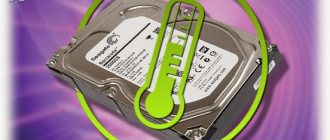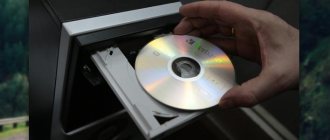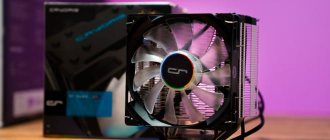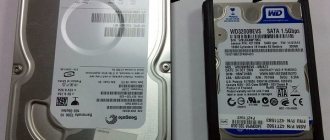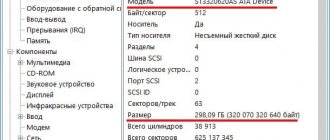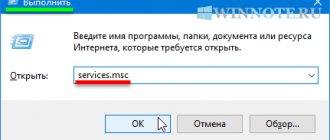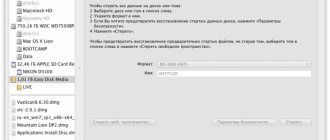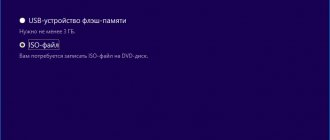Proper use of the HDD will help extend its service life.
You can ensure maximum hard drive life by using it correctly. Below we have summarized some tips for you.
- Defragmentation. Since the hard drive is used almost daily, it would be a good idea to defragment it at least once a quarter.
- Overheat warning. The hard drive should not get too hot during normal operation, otherwise its service life will be significantly reduced. Do not forget to monitor the temperature of the hard drive and, if necessary, update the cooling system in the system unit or on the external HDD box. Often, simply cleaning the insides of your computer is enough.
- Repairing a damaged disk. If you think that the disk is faulty, you can check it with special utilities and repair it. Sometimes reversing the magnetization of sectors allows you to bring back to life an HDD that has begun to “crumble.” Although, we do not recommend storing important data on such drives. It is better to replace them immediately and not play with fate.
- SSD optimization. Those who use solid-state drives will be able to find on the pages of our website tips for optimizing SSDs, which will not only increase their service life, but also slightly improve their overall performance.
Comparing the reliability of hard drives from major manufacturers
- Introduction
- Durability measure
- Typical hard drive failures
- "CC fly" bites Seagate
- Motor spindle wedge
- Delicately covered Western Digital
- Toshiba/Fujitsu and Samsung gash down “pancakes”
- Conclusion
When choosing a hard drive when buying a computer, people most often do not think about its reliability.
Capacity, price and recording speeds - these characteristics are given importance, and the service life of the device is measured only by the duration of the warranty. As it turned out, in vain. The fault tolerance of hard drives varies greatly depending on the manufacturer. At similar prices and capacities, drives from one company can serve well for more than 3.5 years, while another company is highly likely to fail in the first 1.5 years. And if for a home computer this is not so painful - at most the archive of photos from last year’s tour will “burn out”, then a dead hard drive on a corporate server will paralyze the work of the entire problem for several months in advance. Even if a company protects itself by backing up data, it will still incur losses associated with their frequent replacement and downtime for repairs by purchasing short-lived hard drives. The information recovery laboratory Storelab.ru decided to determine whose hard drives usually last the longest. Most hard drives are produced by 6 suppliers: Fujitsu/Toshiba, Hitachi, Samsung, Seagate and Western Digital. To determine who produces the most reliable devices, we analyzed the statistics on the receipt of failed hard drives. More than 4,000 devices were reviewed: from personal computers (3.5" format to laptops (2.5").
The data from the analysis was compared with the market shares of the companies. Obviously, the more hard drives of a certain brand were sold, the higher the percentage of those that failed. Popular models are sent to the information recovery laboratory more often than rare ones. And only a significant difference in revenue volumes and market share can indicate a relatively high or low level of reliability.
It turned out that the two groups of data correlated only partially. The main difference is that the percentage of failed devices at market leader Seagate is almost 2 times higher than its share: 56.1% versus 31%. You can make an allowance for Russian specifics: according to Seagate’s own data, its share in the domestic market is more than 40%. But this fact does not fundamentally change the situation: the percentage of receipts of “dead” disks is significantly higher than the market share. This indicates the lower reliability of Seagate hard drives compared to other manufacturers. All other vendors have revenue share below market share, with Western Digital and Hitachi having a difference of nearly 11%. Thus, the devices of these companies are characterized by higher fault tolerance.
The second important indicator is the average age of hard drives at the time of failure. It, again, differs depending on the disc manufacturer and often depends on the “success” of the model. At the development stage, it is difficult to determine the durability of a hard drive. Having developed a device, the company can only conduct laboratory tests: temperature, pressure, vibration, etc. But this study, as a rule, does not show all design defects. The real test of durability is time. Shortcomings become obvious within a year and a half. If the majority of a manufacturer's hard drives survive this milestone, the product can be considered reliable.
announcements and advertising
2080 Super Gigabyte Gaming OC for 60 rubles.
Compeo.ru - the right comp store without any tricks
RTX 2060 becomes cheaper before the arrival of 3xxx
Ryzen 4000
series included in computers already in Citylink
The price of MSI RTX 2070 has collapsed after the announcement of RTX 3xxx
Core i9 10 series is half the price of the same 9 series
The price of memory has been halved in Regard - it’s more expensive everywhere
As can be seen from the table, the leader in hard drive life expectancy is Hitachi. Its devices lasted an average of 5 years, a year and a half more than the next most reliable Western Digital with a capacity of up to 500 GB.
Seagate's performance is spoiled mainly by the 7200.11 series of Barracuda hard drives with high capacities - from 500 GB to 1.5 TB. It can hardly be called the most successful, since the 11th accounted for 65% of all “dead” Seagate hard drives received at Storelab.ru. The design of the devices in the series was created as if in great haste; it is distinguished by weak components. In addition, the series has an increased percentage of defects. Many of the hard drives stopped working in the first 1.5 years after purchase, that is, they did not even serve their warranty period.
This is surprising, considering the quality of Seagate hard drives from other series. Old Seagate hard drives are much more reliable. Devices received by the laboratory up to series 7200.10 inclusive (35% of the total) worked for 3 years or more.
The most common fault with the 11 Series is firmware failure. When executed via the terminal, it issues a hexadecimal error code, which is preceded by the message LED: 000000CC. Because of it, the glitch was called “SS Fly” in engineering slang. Typical symptoms of the appearance of the “Fly”: the computer begins to “slow down” or freeze, and after a reboot the hard drive is no longer detected by the system. Its microcode self-destructs.
Another common problem is the motor spindle wedge. Hard drives from all manufacturers regularly fail for this reason. Devices with increased capacity that use 3 or more magnetic plates (or “pancakes”) most often jam. Additional “pancakes” increase the load on the hard drive axis, and for it to bend slightly and then stop rotating, it is enough to drop the device from a height of 20 cm. A spindle wedge can be identified by increased vibration of the hard drive and a sharp noise similar to a squeal.
In the 7200.12 series, Seagate uses new technology and new components, but it is not yet clear whether it will be more reliable than the previous one - breakdown statistics have not yet been accumulated.
Among non-working Western Digital hard drives, 59% had a capacity of up to 500 GB and an average age of 3.5 years. The remaining 41% are drives with a capacity of more than 500 GB. Due to the additional “pancakes” they are less reliable and most of them last less than 1.5 years.
WD drives are characterized by failure of the magnetic head unit (MMG). This occurs due to overheating (WD heads are capricious at temperatures above 45 degrees Celsius), as well as due to physical impact. The WD design feature makes these hard drives especially sensitive to shock and pressure. Unlike other suppliers, WD secures the axis with the magnetic head unit not with a separate screw, but with the device cover. Therefore, if you press hard on the hard drive case, the cover may move and change the angle of inclination, then the magnetic heads will come out to the “pancakes” at the wrong angle. This is enough to disable the device. By the way, due to the fastening of the engine axis with the WD hard drive cover, it is almost impossible to disassemble and assemble such a device at home. The clamping of the cover bolts changes slightly and the disk no longer rotates.
Apart from this vulnerability, WD drives are quite reliable both mechanically and electronically.
The non-working hard drives received from Toshiba/Fujitsu were exclusively 2.5-inch format for laptops. The average service life of such a device was 2 years.
A specific Toshiba disease is jamming of the engine axis due to a faulty fluid bearing. The most common cause of breakdowns is the destructive effects of time. The cover that covers the axle in a Toshiba HDD is thin and often deformed. Through small gaps in it, the bearing lubricant evaporates. Gradually, the friction increases, burrs appear in the bushing, and finally, one fine day, the axle stops rotating. This is where you can wave goodbye to the hard drive. An engine wedge is one of the most serious malfunctions; even data recovery after a wedge is not always possible.
In addition, laptop hard drives often fail due to falls; during an impact, the so-called magnetic head block becomes stuck. The fact is that the magnetic plates in the hard drive are ground very precisely, so precisely that if you connect them together, you won’t be able to separate them by pulling them in different directions. The molecular attraction is strong enough that an adult could only pull the discs lengthwise. This same attraction glues the plates and the magnetic heads that read information from them. During normal operation of a hard drive, the heads float above the surface of the “pancakes”. They, like a wing, are lifted by the air flow from the rotation of the disks.
But with a strong impact, the air force is no longer enough to prevent contact. As soon as the BMG touches the “pancakes”, the hard drive engine will no longer be able to separate them and return them to their working position.
When the disks begin to rotate, the heads scratch them until they completely fail and information is lost. The user only hears a quiet buzzing sound; the hard drive is detected in the BIOS, but does not work.
In Samsung hard drives, contact between the magnetic head unit and the “pancakes” sometimes occurs without the “help” of the user. The head of the hard drive from this manufacturer is designed in such a way that sometimes it spontaneously scratches along the surface of the magnetic plate. Therefore, damage to the BMG is the most common cause of failure of Samsung drives.
The manufacturer of the most reliable hard drives is Hitachi Corporation. Of the more than 200 non-working devices from this company that arrived at the Storelab.ru laboratory, there was not a single one with manufacturing defects or weak components. All malfunctions are caused by physical influences from users. Coupled with the longest service life and the best ratio of market share to failure rate, Hitachi hard drives can rightfully be considered the leader in fault tolerance.
The market leader in sales, Seagate, on the contrary, is inferior to other manufacturers in terms of device durability, mainly due to the 7200.11 series hard drives. Reliability data collection for the new .12 series of hard drives continues.
The material was prepared by specialists from Storelab.ru
.
